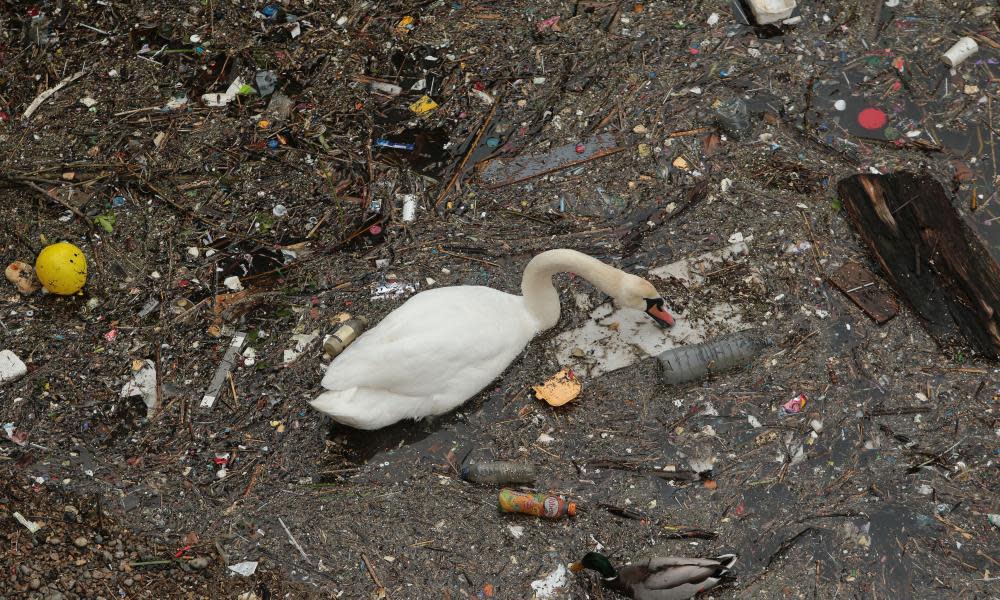How clean are England's rivers? The latest report makes for uncomfortable reading

England, 2020. Every single river and lake is polluted beyond legal limits. Not one is free from toxic chemicals from industries past and present. Water companies disgorge untold volumes of raw human sewage into them, while farm fertilisers and pesticides seep insidiously into rivers, accompanied by lashings of slurry.
Related: Shocking state of English rivers revealed as all of them fail pollution tests
Meanwhile, runoff from towns and roads carries hazardous substances such as polycyclic aromatic hydrocarbons and lead into our watercourses. And sneaky old landfills, mines and industrial sites – happily forgotten – quietly leach their long-banned substances into streams and groundwater.
And that’s just the stuff we know about. Nanomaterials, microplastics and pharmaceuticals also flow through our rivers, with a raft of unknown consequences.
If you think I sound a little paranoid, you’d be right. But also wrong. The latest set of river health assessments conducted by the Environment Agency and published last week by the government laid bare the parlous state of our water bodies and, as environment minister Rebecca Pow conceded, it made for “uncomfortable reading”.
The assessments showed that all England’s rivers and lakes are polluted beyond legal limits as set out in EU law, which compels countries to report on their ecological and chemical condition.
Embarrassingly for the Environment Agency, there has been no improvement in the ecological health of water bodies since the last time they were surveyed, in 2016, when just 14% of rivers made the grade. They’ve been in decline for years – in 2014 the proportion of rivers in good nick was pegged at 17%, but this dropped to 15% in 2015, and then to 14% in 2016, where it remained.
The assessments were undertaken annually until someone decided it would be better if the frequency was switched to once every three years instead. No prizes for guessing why that might be.
But perhaps the most shocking aspect of the results is that all watercourses failed on their chemical condition. In 2016, 97% were classed as being in good chemical health, compared with 0% last year. The agency has explained that this is simply because it has better ways of identifying a wider range of chemicals this time, as though that would provide any comfort.
Some chemicals are disturbingly described by the agency as being “ubiquitous”. These include flame retardants – probably lurking in your sofa – which bioaccumulate and have been found in top predators such as gulls and seals. In humans, some of them have been linked to effects on the thyroid system, with potential endocrine-disrupting properties, not to mention reproductive and neurodevelopment toxicity.
Then there’s PFOS, from a family of synthetic substances known romantically as “forever chemicals” because they just don’t give up. PFOS was used for its nonstick properties in consumer and industrial products and in firefighting foam. It’s been linked to thyroid disease, increased cholesterol, low birth rates, reduced response to vaccines, liver damage and kidney and testicular cancer.
Mercury’s another ubiquitous chemical, but I don’t think it needs much introduction. Other substances causing particular problems for our rivers and regulators include the insecticide cypermethrin and PCBs, which were used as components in electrical and hydraulic equipment as well as in lubricants.
No surprise, then, that the chief executive of the Environment Agency, James Bevan, said he would like to see existing water quality rules tweaked in a way that would see more rivers classed as in good health, claiming the current setup underplays any improvements to water bodies. Green groups do not agree.
For now, the rules are safe. EU environmental law has been transferred into UK law for the most part, so no changes will be made in the short term. But once the Brexit transition period has ended, the environment secretary will have the power to change green rules, should he or she win parliamentary approval to do so.
Even so, Defra might want to get its house in order before it starts fiddling with the regulations. It has slashed the Environment Agency’s budget, which may go some way to explaining why agency officers have told me on multiple occasions that its river spot-sampling regime is “useless”, “unscientific” and a “waste of money”, raising the question: how robust are the assessments anyway? Could the true picture be even worse?
One person who has had more than he can bear is the former Undertones frontman, lifelong angler and now rivers campaigner Feargal Sharkey, who plans to launch a judicial review against Defra and the Environment Agency, which he describes as a “hotbed of mediocrity” for its management of rivers.
None of the above makes pleasant reading for anyone who’s spent the summer heatwaves splashing around in the local river, but it’s not all bad. I hear standup paddleboards have great resale value.
• Rachel Salvidge is an environmental journalist and deputy editor of the ENDS Report, @rachsalv


